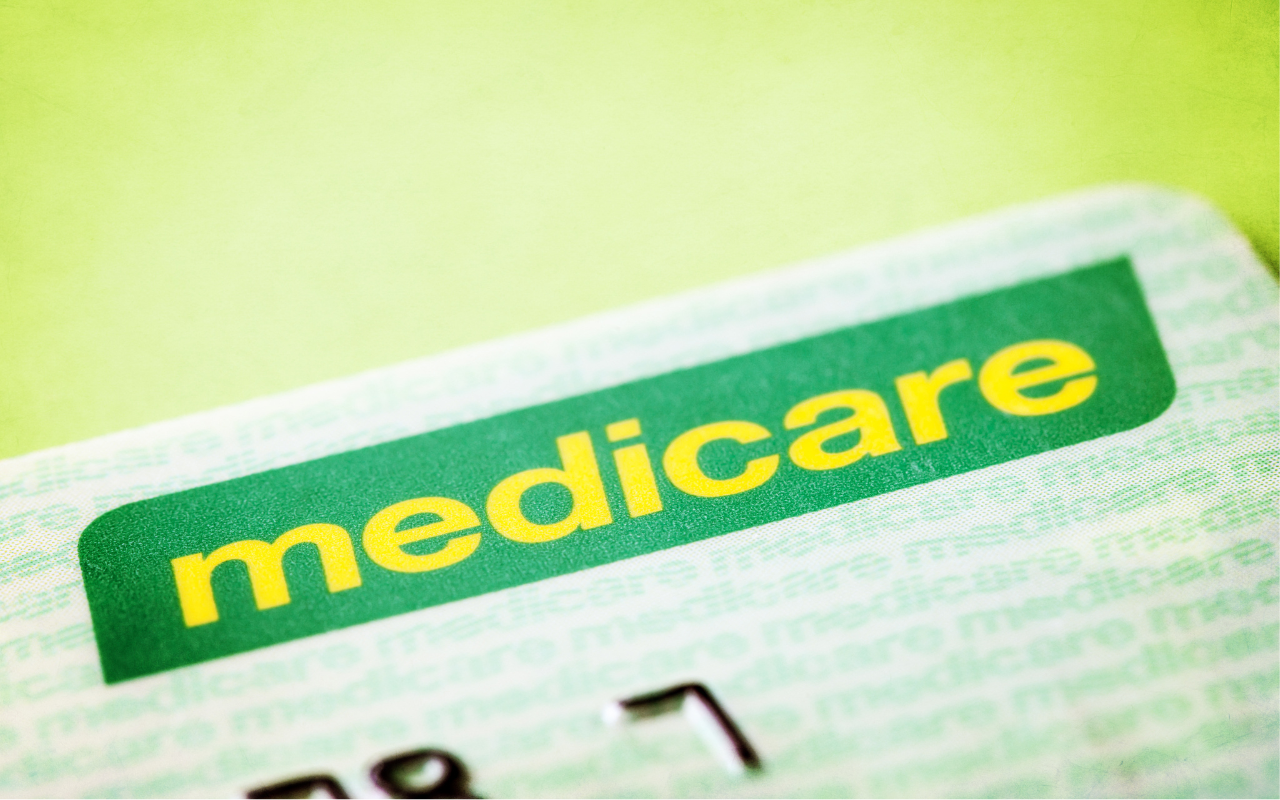InSight+ explores MyMedicare, a new voluntary patient registration model, now available in GP clinics.
The Australian Government’s new MyMedicare model, a form of voluntary patient enrolment (VPE), became available to Australian general practice clinics earlier this month.
The government presents MyMedicare as a model that formalises the relationship between all Australian patients, their general practice, general practitioner (GP), and primary care teams.
Australia has operated under a blended model primary care funding, with a mixture of fee-for-service with Medicare rebates, bulk-billing and private health care.
Some GPs see VPE as a slippery slope towards a capitated funding system, similar to the system in the National Health Service (NHS) in the United Kingdom. In a fully capitated funding model, a government pays a capped amount to general practice clinics per enrolled patient, with those fees tied to certain goals and measures of achievement.

Concerns the government is “increasing its bargaining power”
Dr Chris Irwin is a GP running two specialist clinics in Melbourne. Dr Irwin campaigned against capitation at last year’s Royal Australian College of General Practitioners (RACGP) elections.
“Firstly, we need to call a spade a spade: if voluntary patient enrolment contains capitated payments, you can call it whatever you like; it is a capitated system. You can’t ‘1984 your way out’ of that fact,” said Dr Irwin.
“After we accept that we’re endorsing a capitated system, we need to ask who is in control and what they want.
“GPs want to provide the best quality care to the people in front of us. The last two decades of both Labor and Liberal governments in Australia have shown that government’s primary interests are cost containment, data mining, and increasing the bureaucratic control.”
Since the Medicare rebate has not increased with inflation in the past 20 years, the most vulnerable patients experience barriers to health care, Dr Irwin said.
“The inevitable outcome of any blended payment model if the Medicare Benefits Schedule is not indexed to actual inflation – because, right now, it’s indexed to the wage price index – is that it just makes the fee payments less in real terms.
“If the [Australian] government has the aims I believe it has, then the most rational thing to do would be to do what they’re doing: start a thin wedge of capitation with the small payments and continue to underfund the fee-for-service component,” Dr Irwin said.
“You don’t need to cut fee-for-service funding. All you need to do is let inflation take its toll until fee-for-service payments become unimportant to the total funding model.”
“It is a way for the government to increase its bargaining power in the relationship long term.”
MyMedicare “one of several funding models”
Dr Irwin says he has concerns that MyMedicare contains no extra funding.
“MyMedicare doesn’t do anything apart from cherry-picking a couple of telehealth fee-for-service item numbers that used to be available for all patients, and putting them back in,” Dr Irwin said.
“There’s no extra funding. There will be of course, because that’s the whole point of it: to introduce the capitated bit later on.”
Dr Irwin acknowledges that there is no perfect way of funding the health system.
“My main criticism is that many of the academic arguments for capitation only happen in a system in which you could trust the payer,” said Dr Irwin.
“At the end of the day, what seems like the most logical thing the government will do? The same thing it has done for the past two decades? Or do we think they’ll turn a new leaf?”
MyMedicare to provide “stronger links” with patients
Australian Medical Association Vice President and general practitioner, Dr Danielle McMullen, said while she understood there had been fears about MyMedicare, it will provide stronger links between patients and their usual GP, and allow for additional funding on top of fee-for-service.
“MyMedicare will ensure a stronger link between a patient and their usual GP, establishing a basis for extra funding to flow into general practice over and above current MBS arrangements.”
“The AMA supports strengthening blended funding arrangements, maintaining fee-for-service while boosting other funding streams on top of this, which is what MyMedicare is. We get to keep fee-for-service funding and the flexibility it brings while at the same time providing more support for GP-led team-based care and opening up extra support for patients.”
“MyMedicare is not a funding mechanism in itself. Rather it allows access to increased funding for general practice by better articulating the work done in general practice.”
“Australia is one of the last OECD nations to have a system of patient registration.
“MyMedicare strengthens the ties between a patient and their usual GP and allows GPs to better understand their patient population. It opens up opportunities for practice-based teams to provide population level interventions and take even better care of their communities.”
The UK’s experience
Professor Jane Hall, a Distinguished Professor of Health Economics at the University of Technology, Sydney, said the fear of capitation among some GPs may be based on experiences in the UK.
“I think that to blame the trials and tribulations of the NHS on capitation for primary care is going too far,” Professor Hall said.
“Capitation is just a different way of paying for GP services. It reinforces the relationship between patient and GP, because it pays the GP to have that relationship. We know … incentives can be quite powerful.”
“[In a] fee-for-service system, we’re always concerned about the level of servicing … and a lack of flexibility about how those primary care services are provided.”
Professor Hall pointed to three types of health care funding: capitation, fee-for-service and bundled payments.
“Each system has strengths and weaknesses,” Professor Hall said.
“Health systems are moving to more complex systems … to improve the performance. Fee-for-service has several shortcomings: we don’t know that there is a strong continuity of care.
“We don’t know that medical practices feel responsible for the whole of their patient’s health. That’s why I think it can be positive moving to this more blended model.”
“More detail” needed regarding MyMedicare
Professor Hall called on the Department of Health to provide more detail about MyMedicare and its intentions.
“Under capitation, one of the issues is, are people being given enough care, or is there some skimping going on? And the logic is that the advantage of voluntary patient enrolment is that the patient isn’t then stuck in one practice,” Professor Hall said.
“Are we paying [GPs] enough and fairly to make it worth their while to invest in those systems that patient enrolment should support?”
Professor Hall said that detail regarding the MyMedicare program via the Department of Health website does not currently offer detail.
“The detail must be worked out because they’ve started enrolling patients,” Professor Hall said.
Subscribe to the free InSight+ weekly newsletter here. It is available to all readers, not just registered medical practitioners.

 more_vert
more_vert
To be honest, I have never been able to convince patients that GPMPs/TCAs were anything more than a way to fund allied health professions and that GPMHTPs were anything more than a way to fund psychologists. Most likely, we will not be able to get patients to see MytMedicare as anything other than a way to access telehealth. If this is the case, then I suspect it will be a massive tick-box exercise with minimal impact on preventive care. I hope this is not the case.
I have not gone down the MyMedicare pathway. I stopped bulk billing all new patients as of January 2023. I am strictly fee for service and have never been busier. Successive governments don’t get why GPs are not attracted or staying in general practice. Poor remuneration, increased regulation and red tape (ie MyMedicare), unreasonable demands on treating practitioners, increasing practice costs, increasing accreditation and compliance issues.
The Government’s pamphlet re MyMedicare for patients at my GPs’ practice, showed benefits for patients that should be part of standard care from their GP – if GPs are coordinating their patients’ care. The latter may not occur but additional paperwork for minimal benefit is unlikely to change this.
I find this point very interesting…
Professor Hall pointed to three types of health care funding: capitation, fee-for-service and bundled payments. “Each system has strengths and weaknesses”…
as she carefully fails to even mention a salaried model, which in my view is the only type of funding of primary care with the current expectations, that could work in a way that is fair to all parties.
It would save a huge amount of wastage, characteristic of Medicare, give Govt a degree of budget certainty they currently lack, but desire, and not leave the providers hanging when funding becomes once again, inadequate. Something sure to happen under MyMedicare, even surer than God making apples.
There is no doubt that the move to promote this is pushing primary health towards capitation, although there is really very few benefits for either patients or providers to do this at the moment, which is surprising since the carrot on offer really not much: better rebates for longer telehealth and some yet-unknown incentive for GP to do more visits to those in RACF (some people suggest tripling the BB incentive but that does not really need mymedicare registration for those to obtain these benefits from face to face consultation).
The issue then is what is it for patients: they already have the choice of going to see the doctor they prefer, and willing to see other doctors for minor aliments or when their preferred doctor is busy or away. And IMO if someone needs a long telehealth consultation, generally it is better face to face than on the phone (lets not pretend any significant number is doing video consultation), except for those who are living remotely or far from their preferred doctor. So no better rebates (or incentive to bulk bill) under mymedicare.
SImilarly for GPs, the additional paperwork does not really change their current relationship with the patients in their books: the patients will prefer to see someone they know and like, unless the wait is too long/inconvenient for them (eg minor aliment for medical certification etc).
MyMedicare in its current form will be unlikely to change consumption of healthcare in challenging SES regions, where being bulk billed matters just as much (or more) as seeing your preferred doctor.
Regardless of whether sufficient people enrolled into this scheme, the government will start to tighten the noose, either by slowing rebate growth for consultation without MyMedicare registration, or restricting rebates to any new program to those registered to MyMedicare.
Doctors will no doubt fight against this, but will the people do it as well? History suggests no. For example, the silence of the public with the lack of rebate increase a decade ago when bulk billing rate is at a all time high. Until the issues start to hit their hip pocket (remember Joe Hockey’s “less than 2 middies” comment about that proposed -and failed- $7 copayment plan), no community group will seriously take up the struggle.
Afterall, the potential rebate issue is currently really a problem for “the greedy doctors”, a sentiment perpetuated by years of 2-tiered healthcare in which few in the last 2 generations of Australians have considered healthcare as something to save.
Unfortunately, it’s going to be a lonely road for some time.